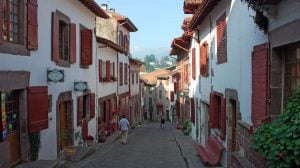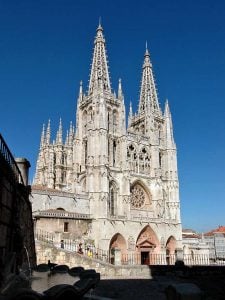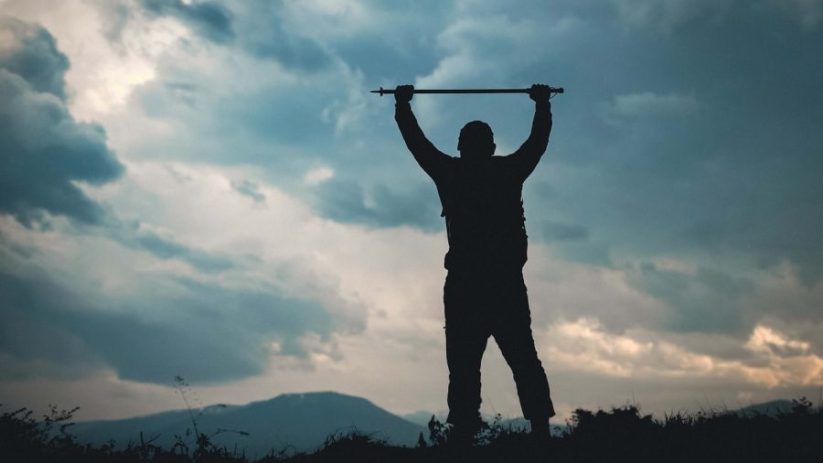Why the epic Camino trail across Spain is a route to true happiness
You will have heard about life-changing journeys, but if I describe a 500-mile Camino trail to Santiago de Compostela, I suspect your reaction would be: turn the page.
But please don’t! I’d reached a time when I needed to re-assess, to reflect a little and decide what I’d like to do with the future.
We all have these moments. So a good friend suggested I do the Camino, as the walk is called. Fortunately, he persisted. Am I religious? A fitness fanatic? A collector of experiences? An idiot? None of the above, at least I hope not the last.
When I embarked on the walk, I was 63 and leading the sedentary life of a writer. The only walking I did was on the occasional Sunday afternoon after lunch.

Perhaps I should begin by telling you a few things that the Camino isn’t. First, it needn’t be a 500-mile walk at all. You can do a section of it — for a weekend or a fortnight.
The whole thing takes between 30 and 40 days. Some complete their Camino by going back year after year. It’s up to you.
There are no rules. You take it as you find it and walk as you will. You can do it on a bike. I met a French couple who did it by Citroen. Second, it’s not necessarily religious. It can be if you wish it to be.
After all, it began as a pilgrimage to the relics of the Apostle James, interred in the grand old Cathedral of Santiago de Compostela. Ever since his grave was discovered in AD800, hundreds of thousands of the great and good have trod the path across northern Spain, making the Camino the most famous pilgrimage in the world
Third, it doesn’t have to be too strenuous. It’s not a holiday on the beach, but it can be taken in your
own time: a few miles a day if you wish.
There are plenty of places to stay, stop, picnic or just put your feet up and admire the view. Before leaving, I did a couple of weeks’ practice, then amazed myself by covering around 12 miles a day in Spain — and I stress, I am Mr Average who bought a pair of good walking shoes.
One of the great lessons I learned on the Camino is that we’re all capable of far more than we think
we are.
Now perhaps I should tell you what the Camino is. Because of the geography of Spain, all overland routes from the north begin in the narrow neck of the Pyrenees, which is in the country’s northeast.
As Santiago de Compostela is in the opposite corner, in the northwest, the walk is essentially across
the top of Spain.
The most popular route is the Camino Frances, which starts from St Jean de Pied de Port on the French side of the Pyrenees, though you can miss out on the mountains by beginning in Roncesvalles, the first town across the border in Spain.
Many people do this; the Camino is a pleasure, not an endurance test. And you can travel alone, with a partner or in a group.
The walk covers two mountain ranges, plains and a huge variety of countryside.
It passes through orchards and vineyards, along the occasional highway, and takes you into villages, towns and even through the cities of Pamplona, Burgos and Leon.
Suppose you’re interested in glorious scenery, palaces (Gaudi’s episcopal palace in Astorga), holy places (the magnificent cathedral in Burgos), Spanish history (Leon’s monastery of San Marcos), contemporary Spanish life (and good times) or food. In that case, you’ll find it on the Camino — and all that is before you’ve reached Santiago and its majestic cathedral.

There are small Camino hotels and pensiones in every village and town — roughly every six miles.
There are also albergues, essentially bunk rooms, which may not be to your taste, but they are ridiculously reasonably priced.
Most restaurants and bars do a special pilgrim menu. So, sensational scenery, great exercise, dazzling attractions, economical places to stay and fantastic food, but none of this is the real reason for walking the Camino de Santiago.
I mentioned at the beginning that this could be a life-changing journey, and you have every right to fix me with a beady look and ask: why? I’ll do my best to answer you.
The Camino’s ancient heritage means it has what many would describe as a spiritual dimension. You can define that in any way you like. Still, for many walkers, it is a quest of some kind: a taking stock or meditation undertaken to ask, hopefully, answer, a few critical questions about themselves.
Of course, there are as many questions as there are pilgrims: about their lives, love, faith, jobs, relationships or even the meaning of their existence.
The result is that most walkers are immediately open to conversations that can become as intimate as you want them to be. And it is this essential connection with others on the same path, with
the same goal, the same very human concerns that make the Camino what it is.
I cannot begin to describe the number and qualities of all I met, many of whom have become great friends.
For more information about the Camino de Santiago.
